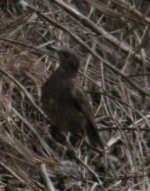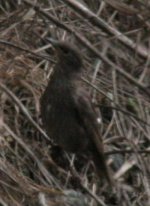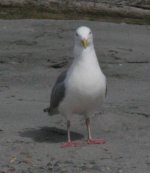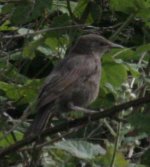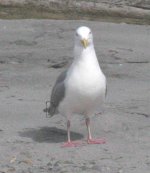Hi there Katy, and a good step into the world of possibilities and impossibilities.
You have lightend the image upp which makes it look a bit better, but the question is, how much better for Western? I would say that the upperpart tone impression is not entirely bad for occidentalis, but you know, if that wing tip would have been the same colour as the upperparts, we wouldn´t have bothered to think that it´s to dark for a GW, not from this image! So, all we have to go on (if we shouldn´t consider the deep pinkish legs and what it seems like (maybe wishful thinking) a hint of a pinkish gape, 400%), that makes me think of GWG, and which by the way does not exclude a hybrid, the gape colour I mean.
To the point.
I can see that the primary tips are a trifle darker than the rest, but are they black? They don´t look that black to my eyes. We need to see more of the underside of the primaries, because underside of prims. are never black on hybrids as on true Western. Om the other hand, the subterminal dark band visible near the tip seems a little bit to wide for
GW, more in line with Western.
Check:
http://www.ups.edu/x5930.xml
If one is to say something of that underwing tip, is that it looks like this:
http://www.schmoker.org/BirdPics/Photos/Gulls/OLGU13.jpg
Others:
http://www.birdinfo.com/A_Images_G/gullhybrids_image.html
But I fear it´s only speculative assumptions, because I can´t really be sure from the image Katy!
Suppose there´s no idea to come upp with Kodak-grey scales and all that, so I wount do that.
Last, It wouldn´t suprise me if another image suddenly popped up., showing a perfect Western (or an imperfect GWG, or a perfect GWG x WG)

JanJ




